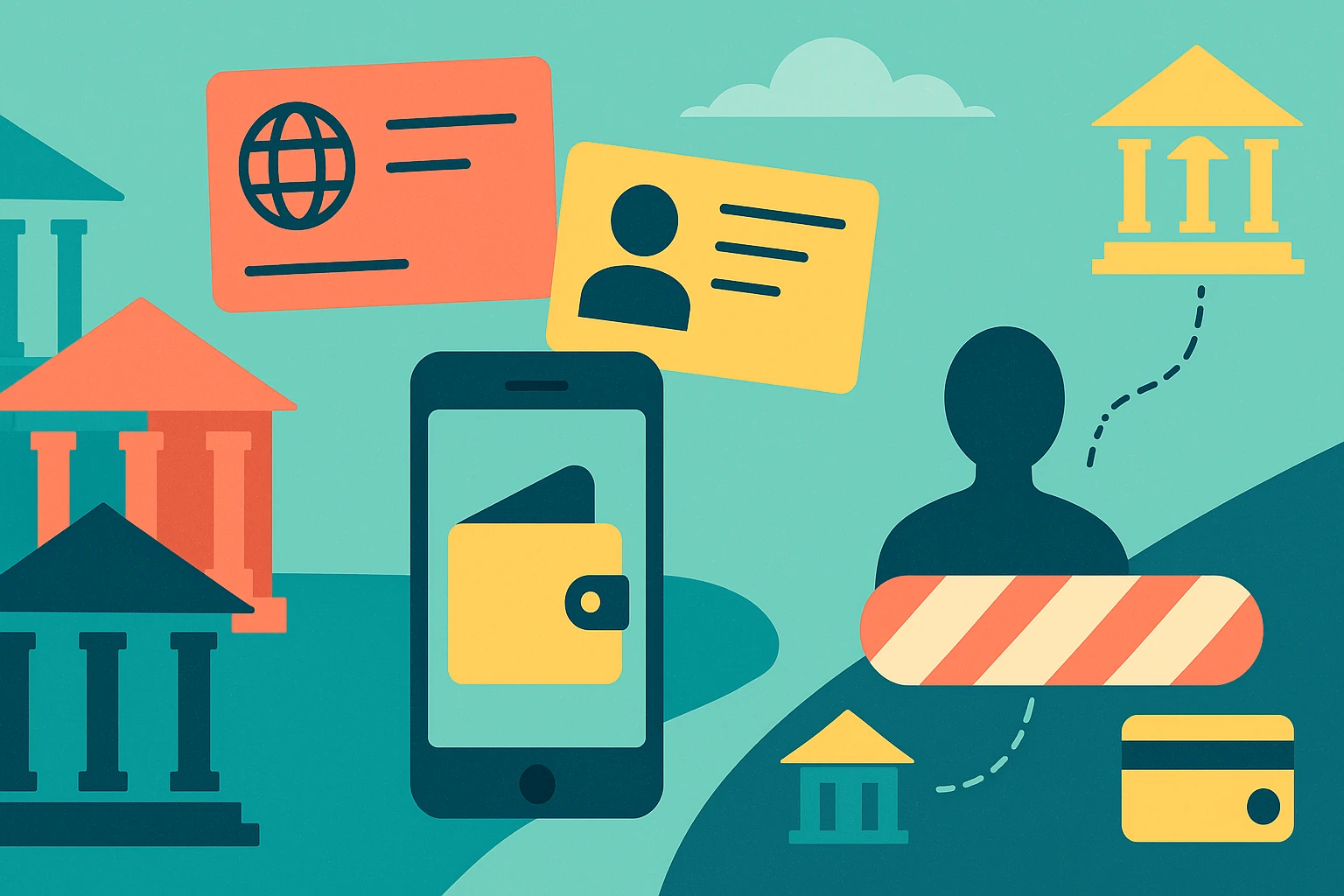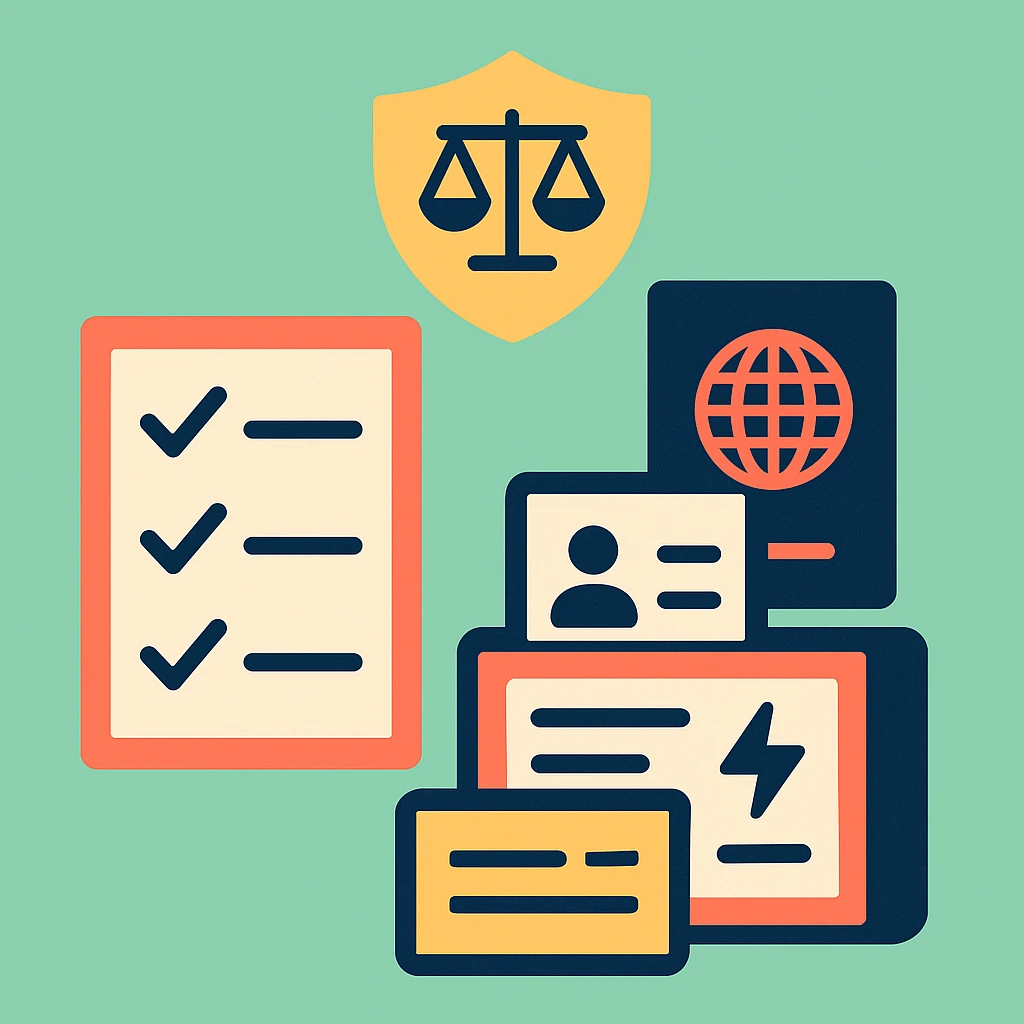I tested whether a bank would open an account for someone without government-issued ID. Here’s a concise, practical account of what I did, what happened, the legal risks, and safe alternatives if you lack standard identification.

The experiment: What I did at the bank
Contents
- 1 The experiment: What I did at the bank
- 2 Why banks require government-issued identification
- 3 What happened when I tried to open an account without ID
- 4 Immediate legal and practical consequences
- 5 Bank policies and international differences
- 6 Safe, legal alternatives to opening an account without ID
- 7 How to prepare proper identification and documentation
- 8 What to do if you’re undocumented or lack standard ID
- 9 FAQ
- 10 Resources
- 11 Key takeaways
I went into a branch and attempted to open a simple checking account without presenting a government-issued photo ID. My goal was to test real-world staff reactions and the formal procedures that follow. I kept the test narrow, lawful, and transparent: I did not attempt or solicit forged documents, nor did I use any illicit services.
Which type of account I requested and why
I asked for a basic checking account with debit access and no credit. I chose this because it’s the most common consumer entry point and typically requires the least documentation after identity verification. I avoided business accounts and wire services, which trigger stricter rules.
How I approached bank staff and what I said
I approached the teller politely, explained I had no government photo ID on me, and asked whether the bank could still open an account. I offered alternative documents and asked about acceptable verification procedures. I documented what staff told me and asked for any written policies they could share.
What supporting information I could provide in lieu of ID
I offered a combination of secondary documents: proof of address (utility bill), a printed employment letter, and an existing bank statement from another institution. I also offered to provide contactable references. Staff reviewed them but emphasized they still needed an approved primary ID.
Why banks require government-issued identification
Anti-money laundering (AML) and know-your-customer (KYC) basics
Banks collect ID to meet AML and KYC obligations. These rules require firms to verify customers’ identities, assess risk, and monitor transactions for suspicious patterns. Compliance prevents banks from becoming conduits for fraud, terrorist financing, or money laundering.
How identity verification prevents fraud and financial crime
Photo IDs, SSNs or national numbers, and verified addresses help banks confirm a person’s identity. Without reliable identity data, banks cannot tie accounts to real-world responsibility, making fraud and anonymous transfers easier.
Regulatory frameworks that force banks to collect ID
In most jurisdictions, laws and regulators (FDIC/FinCEN in the U.S., FCA in the U.K., EBA in the EU, FATF globally) require banks to verify identities when opening accounts. These frameworks also compel suspicious activity reporting and record retention.
What happened when I tried to open an account without ID
Bank staff reactions and formal denial procedures
Staff were professional but firm: without an approved primary ID the branch could not complete account opening. They provided a denial form and explained which documents were acceptable. A supervisor confirmed the refusal and documented the interaction in the bank’s onboarding system.
Any alternative offers the bank proposed (limited accounts, holding options)
The bank offered a few lawful alternatives: a limited “payroll card” or prepaid account with stricter funding and withdrawal limits, or the option to open an account after bringing an approved ID. They explained these options still require at least some verification steps.
What the bank recorded and privacy concerns
The branch logged the attempted application and the reason for denial in its compliance system. This can include name, contact details, and the documents offered. That data is subject to the bank’s privacy policy and may trigger internal reviews or a suspicious activity report (SAR) if anomalies appear.
Immediate legal and practical consequences
Possible administrative or criminal consequences
Trying to open an account with false documents can lead to criminal charges such as fraud or identity theft. Even unsuccessful attempts can trigger compliance reviews. Administrative consequences may include bank bans or reporting to regulators.
Effects on future banking access and credit files
A recorded denial or suspicious flag can make future account applications harder. It may show up in internal denial lists or compliance flags. While not all denials affect credit files, some institutions share data with risk consortia used by other banks.
When banks file suspicious activity reports (SARs)
Banks file SARs when they detect possible money laundering, fraud, or attempts to evade identification rules. Attempting account opening without ID can, depending on context, prompt a SAR if it fits a suspicious pattern. SARs are confidential and may lead to regulatory or law enforcement inquiries.
Legal disclaimer: This account is informational and not legal advice. If you face enforcement, hire a licensed attorney. For procedural questions about identity documents, consult official government agencies.
Bank policies and international differences
How policies differ across the US, EU, UK and other regions
Regulatory details vary. The U.S. requires identity and taxpayer verification (FinCEN/Patriot Act rules); the EU follows EBA guidance; the U.K. enforces FCA rules. Some countries allow nonstandard IDs for low-risk, small-value accounts; others insist on passport or national ID.
Differences between major national banks and local/community banks
Large banks often have stricter centralized procedures and automated checks; community banks and credit unions may offer more flexibility and personal review, but they still must meet regulatory requirements. Exceptions are rare and documented.
Accepted exceptions and how they vary by institution
Some banks accept consular IDs, tribal IDs, or matricula cards in limited jurisdictions. Acceptance varies and is often subject to secondary verification. Always confirm with the specific institution in writing.
Safe, legal alternatives to opening an account without ID
Basic/no-frills accounts and bank exceptions available legally
Ask banks about “basic” or “no-frills” accounts designed for people with limited documentation. Some institutions have documented exceptions—usually for low balances and restricted functionality—provided you can later supply full ID.

Fintech, prepaid cards, and digital wallets with KYC-lite options
Some fintech providers allow limited access with lighter KYC for low-value accounts, but they still require identity verification for higher limits. Carefully read terms and avoid any service that proposes unlawful shortcuts.
Using trusted third parties, NGOs, or community banks lawfully
NGOs, immigrant services, and community credit unions sometimes help people obtain banking access legally—either through special programs or by supporting ID replacement. Use these lawful channels rather than informal or illicit services.
How to prepare proper identification and documentation
Primary acceptable IDs: passport, national ID, residency permit
Primary IDs commonly accepted include:
- Passport (valid)
- National identity card (government-issued photo ID)
- Residency permit or government-issued work authorization
- Driver’s license or state ID card
Secondary documents that can support identity (utility bills, affidavits)
Secondary documents can help corroborate identity and residence but rarely replace primary ID. Examples:
- Recent utility bill or rental agreement showing your name and address
- Employer verification letter or pay stub
- Bank statements from an established account at another institution
- Notarized affidavit or reference from a recognized community organization
How to obtain replacement ID or emergency identification documents
If you lost ID, start with official replacement processes: state DMV for driver’s licenses, passport agencies for passports, or consulates for overseas nationals. Many countries provide expedited or emergency ID services for urgent needs.
What to do if you’re undocumented or lack standard ID
Options for undocumented immigrants: special accounts, community credit unions
Some credit unions and community banks offer accounts that accept alternative IDs or local documentation. Specific programs exist in certain jurisdictions to provide banking access while individuals regularize their status. Always verify the institution’s policy in writing.
How legal aid, consulates, and NGOs can help obtain documentation
Legal aid organizations, consulates, and dedicated NGOs can help you obtain replacement documents, secure paperwork for immigration status, or advise on lawful banking options. They can also provide letters or attestations that some banks accept as supporting documentation.
Practical short-term measures while you secure proper ID
Short-term lawful measures include using a trusted person’s account for urgent payments (with caution and written permission), using prepaid debit cards sold in stores (within their limits), or working with community organizations that offer financial access programs. Always use only lawful, documented arrangements.
FAQ
Can I open a bank account without a government ID?
In most jurisdictions, no—banks generally require a government-issued photo ID plus other verification. Some limited accounts or prepaid products may allow minimal access with alternative documents, but these options are restricted and vary by institution.
Will trying to open an account without ID lead to arrest?
Attempting to open an account without ID is not automatically a crime. However, using false documents, forged IDs, or illicit services is criminal. If bank staff suspect fraud, they may file a suspicious activity report and law enforcement could get involved.
Are there legal alternatives if I’m undocumented?
Yes. Some community banks, credit unions, and NGOs offer programs for people without traditional ID. You can also pursue consular or legal channels to obtain valid ID. Avoid any service that promises anonymous banking or circumvents KYC rules.
What should I do if a bank suggests using a third-party service?
Verify the third party’s legitimacy. Insist on written documentation of what will be shared and why. If anything sounds like evasion of KYC or involves darknet/illicit services, refuse and consult legal counsel or a consumer protection agency.
Resources
- FDIC – Consumer Banking Resources
- Consumer Financial Protection Bureau (CFPB)
- Financial Conduct Authority (UK)
- European Banking Authority (EBA)
- Financial Action Task Force (FATF)
- UNHCR – Guidance for Displaced Persons
- USA.gov – Replace Vital Documents
- U.S. Social Security Administration – Replacing SSN Documents
Key takeaways
- Banks usually require government-issued photo ID to open standard accounts; exceptions are limited and documented.
- Attempting to use forged documents or illicit services is illegal and carries serious criminal and administrative risks.
- Lawful alternatives exist—basic accounts, fintech options, community banks, and NGO assistance—but all require some verification.
- If you lack ID, prioritize official replacement routes and consult legal aid or consular services for help.
- When in doubt, contact the bank in writing and consult a licensed attorney for legal exposure or immigration concerns.